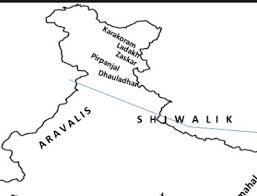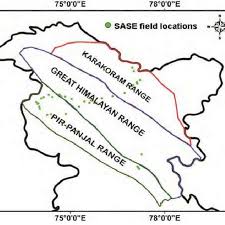The Pir Panjal Range is located in Jammu and Kashmir. It acts as the natural divide between the Kashmir Valley and the plains of northern India.

Pir Panjal Range is a part of the larger Himalayan mountain system. It borders the famous Kashmir Valley to the northeast and the lesser-known Poonch Valley to the southwest.

The Pir Panjal Range is home to a rich and diverse range of flora and fauna. The lower slopes are covered with dense forests of coniferous trees, like pine, fir, and cedar. As the altitude increases, the forests give way to alpine meadows filled with wildflowers during the summer months. The region is also known for its wildlife species such as the Himalayan brown bear, snow leopard, musk deer, and various bird species.
The Pir Panjal Range holds immense cultural significance for the people of Jammu and Kashmir. The range has been an integral part of the region’s history, shaping its cultural and religious practices. The local communities, including the Gujjar and Bakarwal tribes, have traditionally inhabited the mountains and depend on them for their livelihoods, practicing transhumance by moving their herds between high-altitude summer pastures and lower valleys during the winter.
Over the years, efforts have been made to improve infrastructure and connectivity in the Pir Panjal Range. The famous Mughal Road, an ancient trade route, connects the Kashmir Valley with the Poonch Valley, traversing the range. The construction of tunnels and roads, such as the Jawahar Tunnel and the upcoming Zojila Tunnel, has facilitated easier access and enhanced connectivity for locals and tourists alike.
With the growing interest in the region’s natural beauty and adventure tourism, there is a need for responsible conservation and sustainable development practices in the Pir Panjal Range. Efforts are being made to promote eco-tourism, raise awareness about environmental conservation, and involve local communities in the management and preservation of the region’s natural resources.
Read: Geography